Dyeing for Change: Inside Octarine Bio’s Collective Vision for Sustainable Fashion
The collaboration that brought Octarine Bio’s bio-based dyes to life through an Italian supply chain built on trust, tradition, and transformation.
Written by Aastha Kothari
EDITED by ARIYANA RAYATT
As the fashion industry comes to terms with its environmental impact, the search for low-impact alternatives continues. But too often, even the most promising solutions remain disconnected from the systems they aim to transform. In a global industry worth over $1.7 trillion, no innovation can succeed on its own.
One of the biggest problems is dyeing. The fashion industry uses an estimated five trillion litres of water every year just to dye fabric. That’s enough to sustain 250 million people for a year. Dyeing causes about 20 per cent of industrial water pollution and contributes around 10 per cent of fashion’s annual carbon emissions.
Octarine Bio, a Danish synthetic biology company, set out to offer a better way. Its PurePalette™ dyes are made using microbes instead of petrochemicals. The colours are brewed through precision fermentation, using nature’s own processes to create pigment without the heavy toll on water, land, or air.
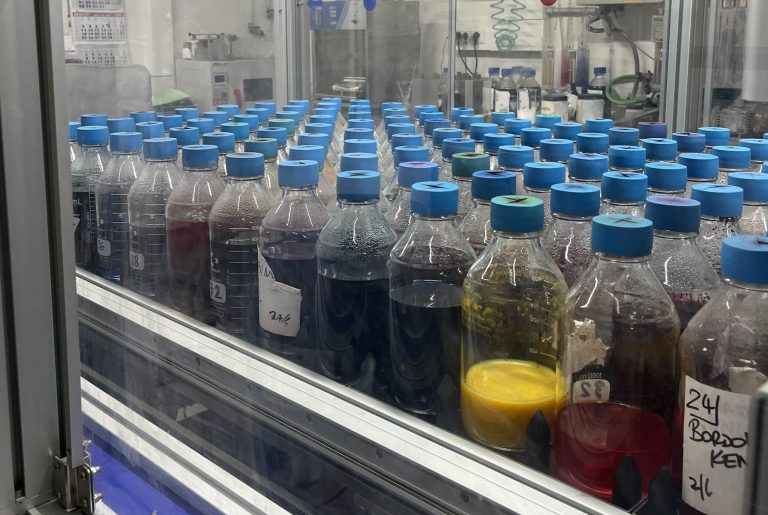
But a breakthrough dye is only the first step. If it can’t work within existing supply chains, it won’t work at scale. Many of these systems have been running the same way for decades. Changing them takes more than technology. It takes, quite literally, a village.
A new capsule of sweaters, created by Octarine Bio in partnership with Filati Omega, Tintoria Martelli, and Maglificio FMF, shows what that collaboration can look like. Each piece is a working model of shared action across three parts of the Italian supply chain.
This is a story about a better, most sustainable dye, sure. But it is also about how real change happens.
And it starts with a sweater.
To turn a new dye into a real product, Octarine Bio needed partners who understood both innovation and tradition. Julie Verdich, Octarine’s Director of Partnerships and Product Development, set out to find the right environment to test and scale. Italy stood out immediately, a place where centuries-old textile craft meets modern industry, and where supply chains are tight-knit enough to make collaboration work.
From Idea to Sweater
The pilot began with yarns supplied by Filati Omega, a spinner known for its work with recycled and speciality fibres. For this project, the team selected post-consumer recycled wool, Circulose® made from textile waste, and silk. The mix of fibres allowed Octarine to test whether PurePalette™ dyes could deliver consistent results across different materials.
At Tintoria Martelli, an industrial dyehouse, the dyes were put into practice. Octarine’s powders were dissolved directly into existing equipment, and the focus was on fixation and reproducibility. The team noted that the colours took evenly across fibres, a promising sign that the dyes could work in real-world production. As Gabriele Innocenti of Filati Omega recalled, “With one dyeing agent, it was possible to dye, in a more or less uniform manner, a garment made with as many as four different fibres.”
The dyed yarns were then sent to Maglificio FMF, specialists in knitwear construction. There, the samples were knitted into sweaters in different gauges and finishes, from solid shades to melange looks. For the first time, the bio-based dyes moved from test tubes into tangible fashion pieces that could be touched, worn, and evaluated.
The sweaters form a sample collection, now being used to engage with brands. Several have already expressed interest in working with the fully integrated Italian supply chain validated together through this pilot.
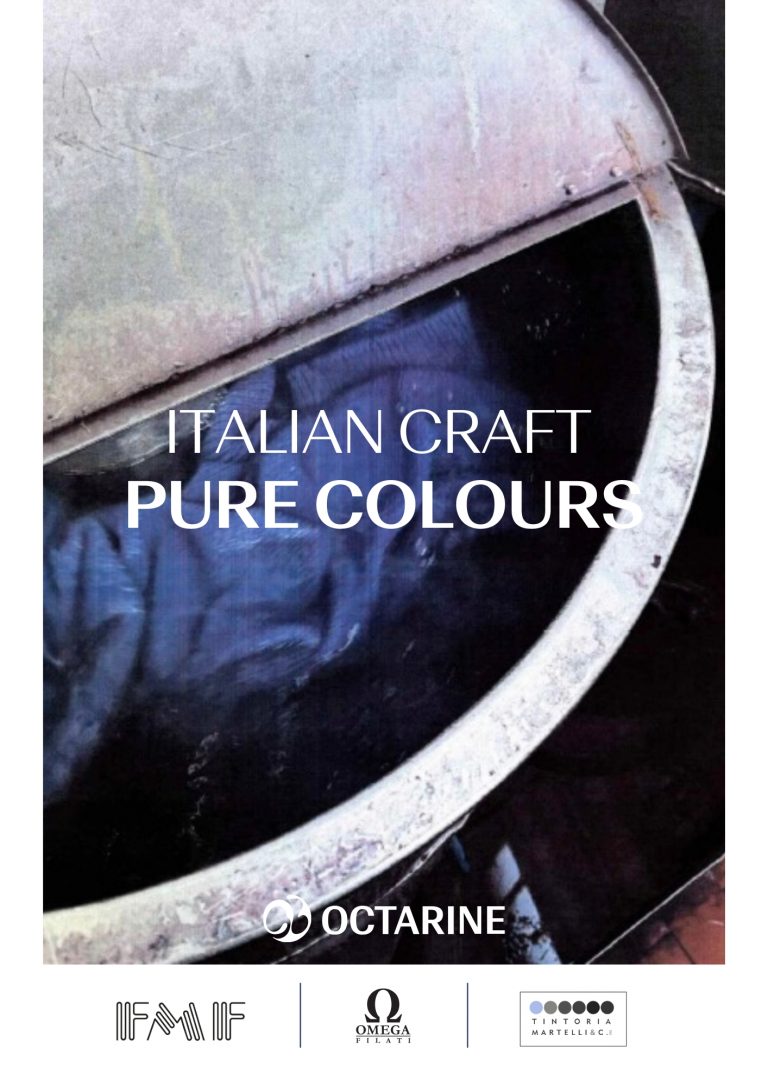
Seeing the First Results
When the first sweaters came off the machines, it felt like proof that PurePalette™ could move through a real supply chain without special treatment. The purple colour held across all fibres, showing how one bio-based dye can perform on diverse materials.
The partners quickly noticed advantages: Martelli pointed out the cleaner process without synthetic auxiliaries, and Filati Omega saw potential cost savings in dyeing, though they stressed more trials are needed to confirm energy and water reductions. What stood out most was versatility: a single dye bath covered multiple fibres, while the strength of the dyes meant that 20–40 times less dyestuff was needed compared to a regular synthetic dye.
Challenges remain around controlling the colour strength when dyeing across fibres, but early trials gave confidence that the foundations are solid. As Gabriele Innocenti of Filati Omega noted, “Dyeing without synthetic chemical dyes is now possible, but we are still at an early stage of experimentation.”
More than the technical results, the project highlighted the power of collaboration. Spinner, dyehouse, and knitwear maker worked as one, building not just sweaters but a proof-of-concept supply chain that blends tradition with new ideas, and points toward a future where bio-based colour can thrive in luxury fashion.
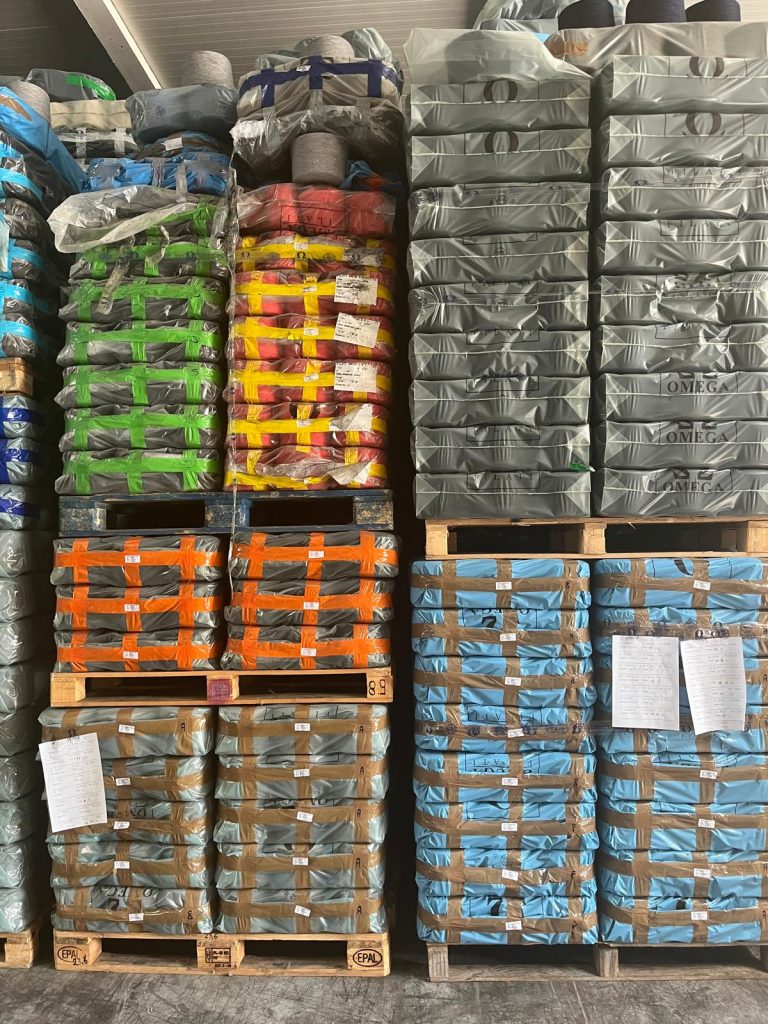
Lessons in Collaboration and Innovation
These sweaters have proved that PurePalette™ dyes can perform across wool, silk, and next-gen fibres like Circulose. But the deeper lesson wasn’t just about the chemistry. It was about proving that innovation can slot into one of the most traditional industries in the world without losing its integrity.
For Octarine Bio, the pilot showed that progress depends on speed and trust. By sharing samples quickly with brands, the team invited collaboration rather than waiting for perfection. That created momentum and started the conversations that matter.
And for the Italian partners, the project reinforced that adopting sustainable solutions doesn’t have to mean abandoning heritage craft. On the contrary, it demonstrated how new technologies can be integrated, building on traditional expertise and strengthening the local industry by keeping production relevant for the future.
In that sense, the sweaters weren’t just proof of concept. They were proof of possibility.
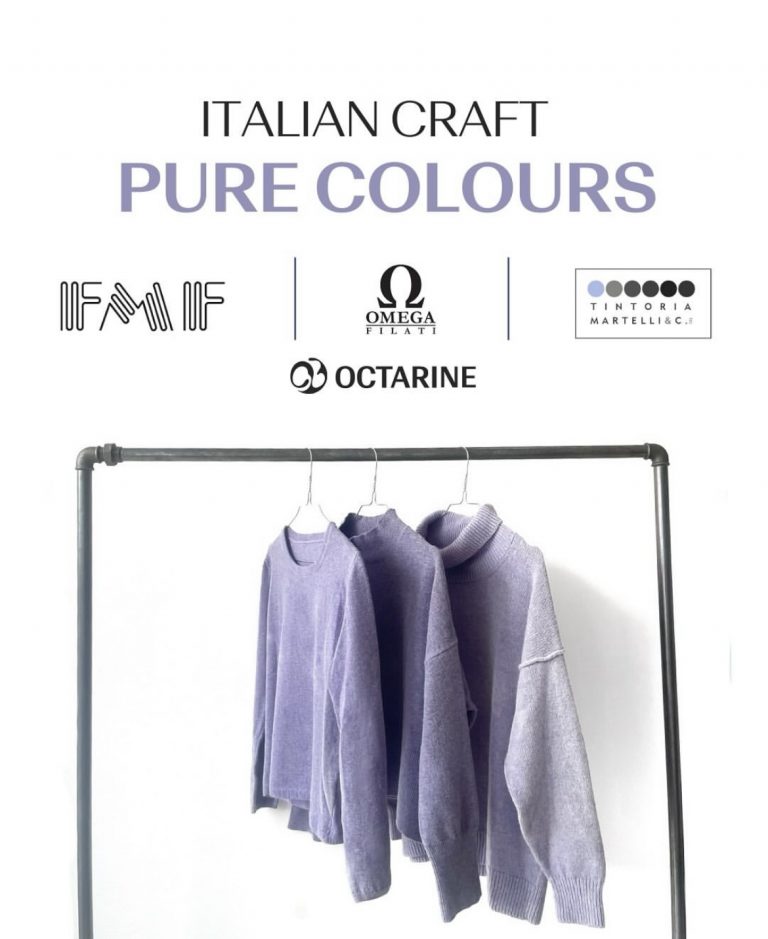
A New Model for Sustainable Fashion
This pilot was about proving that sustainable colour can be produced within one of the world’s most established textile hubs. By showing that bio-based dyes work in real mills, with real fabrics, Octarine Bio and its partners have opened the door to a new model of how innovation can scale.
The fashion industry faces enormous pressure to cut emissions and water use, yet no single company can solve those challenges alone. Progress depends on entire supply chains moving together, from biotech startups to heritage manufacturers to global brands.
As Julie Verdich put it, “We don’t want to build a parallel system. We want to fit into the one that exists, and make it better.” That is the real breakthrough: not just inventing a new dye, but proving that collaboration can make sustainability practical.
The road ahead for fashion will be shaped by these kinds of partnerships. Octarine Bio’s pilot is a reminder that if the industry wants to move from promises to impact, it will take a village.
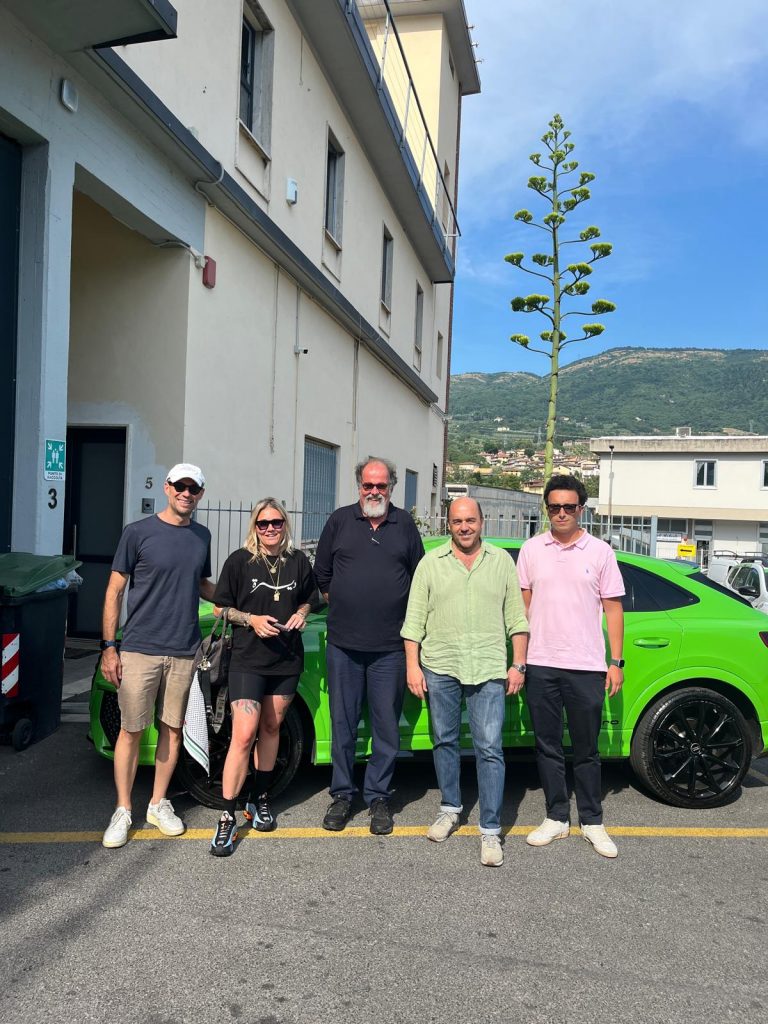
The BioDesign Newsletter
- Issue 53: Resilience in Biodesign: Scaling Amid Setbacks
Industry leaders face financial turbulence, but fresh alliances and material advances highlight a sector refusing to slow down.
- $50 Billion in Waste, Algae Ink at Scale, and Japan Invests in LA Fibres
The Summer Developments of 2025 in the Next Generation of Materials and Technologies
- Could Cross-Industry Biomaterial Partnerships Outpace Single-Sector Innovation?
How diversified platform strategies will improve commercial viability beyond single-application biomaterials
- From Chanel to Shein: Is Resource Scarcity a Stronger Catalyst Than Legislation?
The impact of consumer demand, resource scarcity, and regulations across fast-fashion, luxury houses & sportswear
- House of BioDesign Newsletter #047
Industrial-scale recycling, biodegradable pigments, and closed-loop systems continue to advance amid shrinking policy ambitions
